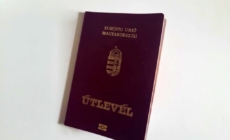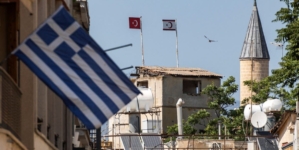-
‘Pure Excitement!’ — Freddie Freeman on His Walk-Off Home Run in Dodgers’ World Series Game 3 Win - 14 mins ago
-
Amazon cutting 14,000 jobs as the retailing giant embraces AI - 17 mins ago
-
Pro-Palestinian freeway protesters could see charges dropped - 21 mins ago
-
Hearts Break As Dog ‘Minding His Own Business’ at Park, Then It All Changes - 23 mins ago
-
American stranded in Jamaica describes awaiting Hurricane Melissa - 26 mins ago
-
Hungarian Citizens Gain Even More Travel Freedom with Stronger Passport - 44 mins ago
-
Katy Perry, Justin Trudeau visit famed French cabaret frequented by Hollywood stars - 59 mins ago
-
How ‘election integrity’ could lead to voter suppression - about 1 hour ago
-
Candy company files for bankruptcy days before Halloween - about 1 hour ago
-
'What matters the most is we won' 💙 Shohei Ohtani on historic performance in Dodgers' Game 3 win - about 1 hour ago
US Missiles Stationed in Philippines Can Reach China: Official
A Philippine general said on Friday that the United States Typhon missile system deployed in the country since April last year is capable of striking China.
The Chinese Foreign Ministry did not immediately respond to a request for comment.
Why It Matters
The Typhon Mid-Range Capability system is a land-based missile system operated by the U.S. Army. It can launch two types of missiles—the Tomahawk and the Standard Missile-6—against aerial, surface and land targets, with respective ranges of about 1,000 and 290 miles.
The U.S. Army initially deployed the Typhon missile system in the Philippines for drills, but the U.S. and the Philippines, allies under a mutual defense treaty, later decided to keep it there indefinitely. Eastern and southern China and parts of the South China Sea—where Beijing and Manila have territorial disputes—fall within range of the system.
What To Know
Armed Forces of the Philippines Chief General Romeo Brawner Jr. said in an interview that deploying the Typhon missile system is part of the military’s effort to strengthen its capability to defend the country against any invasion attempt, the Daily Tribune reported.
While acknowledging that mainland China and China’s artificial islands in the South China Sea are within range of the system, the general said the weapon’s range does “not matter to others” as the Philippines focuses on building defenses against “any threats.”
“It is not specifically targeting China, but these missile systems are here so we can train. Once we acquire these capabilities, we must be ready to use them,” the general said. Manila revealed its interest in buying the Typhon missile system last November.
The Philippine military chief said that even without hosting the U.S. missile system, the country is already a target because of its “very strategic” location, close to Taiwan and serving as a chokepoint between the South China Sea and the broader Pacific.
China’s communist government has claimed sovereignty over the self-governed island of Taiwan and has threatened to use force to achieve reunification. The Typhon missile system could strike Chinese invasion forces in the air and at sea from the Philippines.
The Philippines and Taiwan form part of a north-south defensive line known as the First Island Chain, along with Japan, under a U.S. containment strategy that aims to project military power to deter and defend against potential Chinese aggression.
The Chinese defense and foreign ministries have been urging the U.S. and the Philippines to withdraw the Typhon missile system from the Philippines, saying the deployment undermines China’s legitimate security interests and warning that it would take necessary countermeasures.
“This is a significant step in our partnership with the Philippines, our oldest treaty ally in the region,” the U.S. Army previously said of the “landmark” Typhon missile system deployment, saying it has enhanced interoperability, readiness and defense capabilities.
What People Are Saying
Armed Forces of the Philippines Chief General Romeo Brawner Jr. said in an interview on Friday: “These are medium-range missiles, meaning that if they are launched, they can reach mainland China and even their artificial islands. But for us, they do not matter to others; we are strengthening the [Armed Forces of the Philippines] to defend our country against any nation attempting to invade or seize our territory.”
Guo Jiakun, spokesperson for China’s Foreign Ministry, said at a press conference on February 12: “China will not sit idly by when its security interests are harmed or threatened … We call on the Philippines to change its course, and make a strategic choice that truly serves the fundamental interest of itself and its people, rather than staying on the wrong path and hurting the Philippines itself when it comes to issues like Typhon.”
What Happens Next
China is likely to continue pressuring the Philippines over the Typhon missile system deployment, which could further increase tensions in the contested South China Sea.
Source link





























